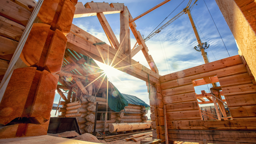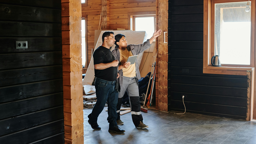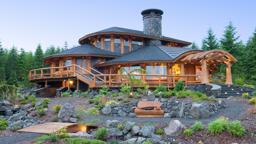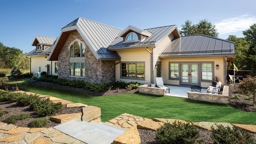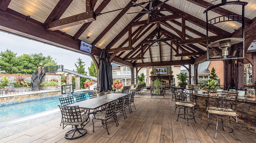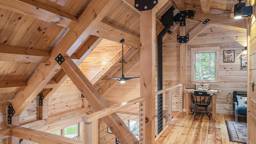
Everyone envisions his or her timber home on that perfect piece of property with that magnificent view. But beauty is only skin deep, and, when buying land, you’ll not only need to know what’s beneath the surface, but what it will take to access it. Once you know the land is sound, you’ll want to select a safe, comfortable spot for your home — someplace that offers ideal protection from the elements. This is, after all, the whole point of shelter.
Is it buildable?
You’ve found land you like, but will it work for you? Think ahead; extending power lines for your personal use and blasting unforeseen bedrock can be huge budget-busters. Before you make an offer on a parcel, know exactly how you are going to handle:
- Water (either from a public waterworks or from a well)
- Waste (either septic or public sewer)
- Power (public utility or off the grid)
- Gas (either from a utility company or from a propane tank)
- Phone and internet service (connectivity to a reliable wireless signal)
For a remote location, power will be a primary concern. If you are far away from other homes or from the utility provider, you may be charged a hefty fee to bring the utility access out to your property. Extending new power lines can cost as much as $100 a foot, so if your property is 200 feet away from the nearest utility lines, you may need to pay $20,000 to tap in. Call the utility company and get a quote on the costs before you buy the land or consider what it will take to power your house off the grid.
What’s actually included?
Natural resource law can get complicated, and the rules differ from region to region. There may be certain rights on the lot you’re interested in owning that are held by a third party, of which you may not be aware.
For example, if you buy a lot in a forest, will you own the trees? There are circumstances where a third party may own the timber rights to your property and will harvest trees as they mature.
Water rights are particularly important in the western United States, where H2O can be scarce. Just because your prospective land has a stream or a small pond, doesn’t necessarily mean that you’ll own the rights to the water. Have a title company research the plot you are considering and determine if there are any easements or access restrictions. The same applies to subsurface mineral rights.
What lies beneath?
The site you choose could be ideal in every way until your excavator runs into solid bedrock while installing the foundation. Blasting costs can mount quickly, so visit neighboring sites to discover if builders encountered bedrock.
If tapping into municipal waterlines is off the table, well water will be another subsurface concern. Water tables vary with the topography of the land and the soil composition so there is no way to predict how deep you will need to drill.
Your building site also may need to pass a percolation or “perc” test to determine whether the land will readily accept wastewater/septic system. A building inspector will pour water into a hole in the ground and the water will have to drain from the hole within a specified time period, as dictated by the local building code.
Where should you build?
- Spend some time with your land. Walk on it, sit and listen. Pitch a tent and spend the night on your personal slice of the planet. Show up at different times of the day and year to mark the rising and setting of the sun, turning of the seasons and weather patterns.
- Ask neighbors how they prepare for changing seasons, what they find most memorable about the weather, available daylight and notable natural events.
- Consider access points. The placement of driveways, walkways and porches will help define your home site.
- Optimize orientation. Within the access-point boundaries, figure out the basic shape of the house and the direction it will face. Passive solar design can be beneficial; orient the longer axis of your home east/west so the longer dimension faces sunny south.
- Strategize room placement. Frequently used rooms ideally go on the side of the home facing south. Rooms that require little heat and light (like utility rooms and garages) go on the cooler north side. Consider what rooms should have a view and how your spaces will flow into one another.
- Use the terrain for inspiration. Paying tribute to the natural surroundings will make it seem like your home sprung right out of the ground.




